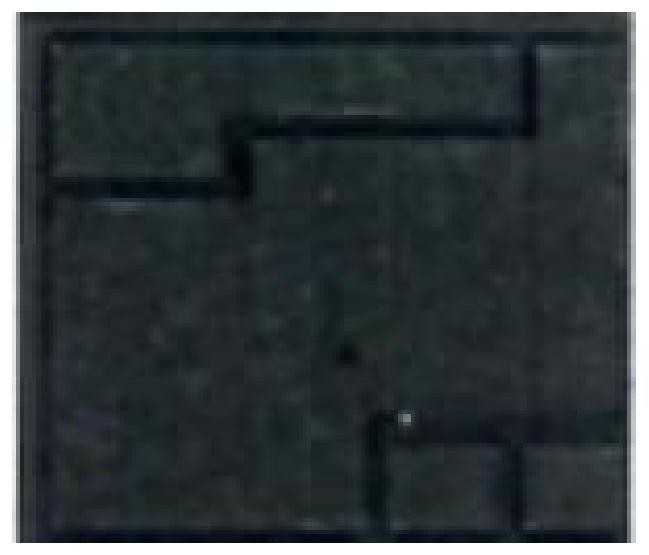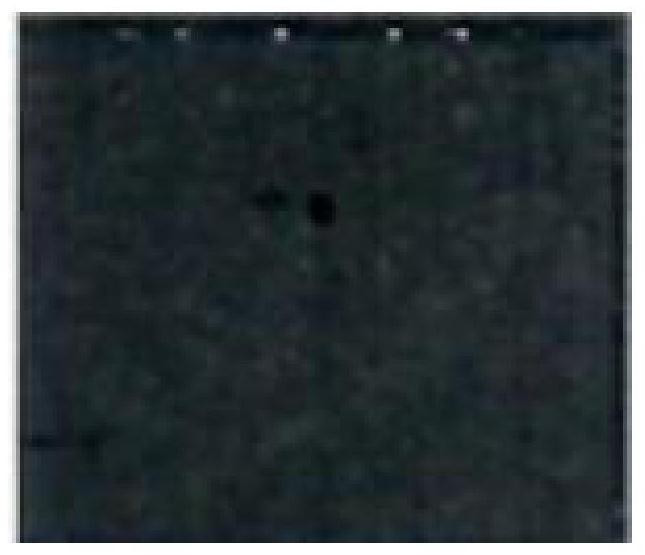Active metal brazing copper-clad ceramic substrate and preparation method thereof
A technology of copper-clad ceramic substrate and active metal solder is applied in the improvement of metal adhesion of insulating substrates, photovoltaic power generation, secondary treatment of printed circuits, etc. The performance difference is relatively large and other problems, so as to reduce the porosity, increase the density, and improve the screen printing performance.
- Summary
- Abstract
- Description
- Claims
- Application Information
AI Technical Summary
Problems solved by technology
Method used
Image
Examples
Embodiment 1
[0032] Step 1: (1) Place 12 parts of phytic acid and 4 parts of sodium dodecylbenzenesulfonate in a mixed solvent of 6 parts of ethanol and 78 parts of deionized water to obtain a cleaning agent; (2) put the AIN ceramic substrate on the Set a positioning reference hole with a diameter of 1.5 mm; place it in a cleaning agent, set the temperature to 75 °C, ultrasonically wash for 5 minutes, and blow dry with nitrogen to obtain a ceramic substrate A;
[0033] Step 2: (1) ultrasonically disperse 1g graphene oxide in 250mL ethanol, add 5mL tetrabutyl titanate, 2mL tetraethyl silicate, 5mL deionized water, stir evenly, set the temperature to 80°C for reflux for 6 hours, Freeze-dried; placed in a high-temperature furnace, heat treatment at a temperature of 420°C for 3.5 hours under a nitrogen atmosphere; heated to 820°C, nitrogen was replaced with ammonia gas, and the flow rate of ammonia gas was 100cm 3 / min, heat treatment for 3.5 hours, and cooling under nitrogen atmosphere to obta...
Embodiment 2
[0038] Step 1: (1) Place 10 parts of phytic acid and 4 parts of sodium dodecylbenzenesulfonate in a mixed solvent of 5 parts of ethanol and 78 parts of deionized water to obtain a cleaning agent; (2) put the AIN ceramic substrate on the Set a positioning reference hole with a diameter of 1.0 mm; place it in a cleaning agent, set the temperature to 70 °C, ultrasonically wash for 8 minutes, and blow dry with nitrogen to obtain a ceramic substrate A;
[0039] Step 2: (1) ultrasonically disperse 1g graphene oxide in 250mL ethanol, add 5mL tetrabutyl titanate, 2mL tetraethyl silicate, 5mL deionized water, stir evenly, set the temperature to 79°C and reflux for 7 hours, Freeze-dried; placed in a high temperature furnace, heat treatment at 400 °C for 4 hours under nitrogen atmosphere; heated to 800 °C, nitrogen was replaced with ammonia gas, and the flow rate of ammonia gas was 80 cm 3 / min, heat treatment for 4 hours, and cooling under nitrogen atmosphere to obtain graphene composit...
Embodiment 3
[0044] Step 1: (1) Place 12 parts of phytic acid and 5 parts of sodium dodecylbenzenesulfonate in a mixed solvent of 6 parts of ethanol and 80 parts of deionized water to obtain a cleaning agent; (2) place the AIN ceramic substrate on the Set a positioning reference hole with a diameter of 2.0 mm; place it in a cleaning agent, set the temperature to 80 °C, ultrasonically wash for 3 minutes, and blow dry with nitrogen to obtain a ceramic substrate A;
[0045] Step 2: (1) ultrasonically disperse 1 g of graphene oxide in 250 mL of ethanol, add 5 mL of tetrabutyl titanate, 2 mL of tetraethyl silicate, and 5 mL of deionized water, stir evenly, set the temperature to 82°C and reflux for 5 hours, Freeze-dried; placed in a high temperature furnace, heat treatment at 450 °C for 3 hours under nitrogen atmosphere; heated to 850 °C, nitrogen was replaced with ammonia gas, and the flow rate of ammonia gas was 100 cm 3 / min, heat treatment for 4 hours, and cooling under nitrogen atmosphere ...
PUM
| Property | Measurement | Unit |
|---|---|---|
| diameter | aaaaa | aaaaa |
| thickness | aaaaa | aaaaa |
Abstract
Description
Claims
Application Information
 Login to View More
Login to View More - R&D
- Intellectual Property
- Life Sciences
- Materials
- Tech Scout
- Unparalleled Data Quality
- Higher Quality Content
- 60% Fewer Hallucinations
Browse by: Latest US Patents, China's latest patents, Technical Efficacy Thesaurus, Application Domain, Technology Topic, Popular Technical Reports.
© 2025 PatSnap. All rights reserved.Legal|Privacy policy|Modern Slavery Act Transparency Statement|Sitemap|About US| Contact US: help@patsnap.com



